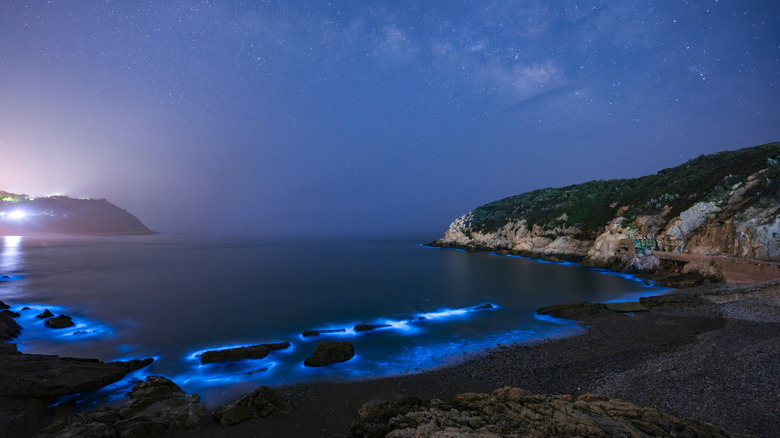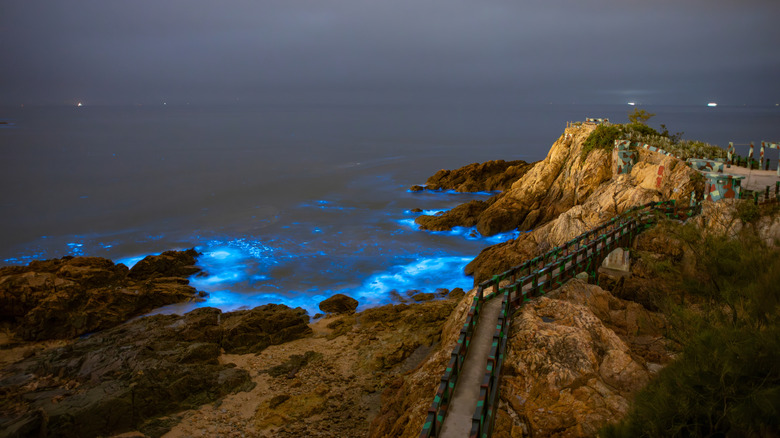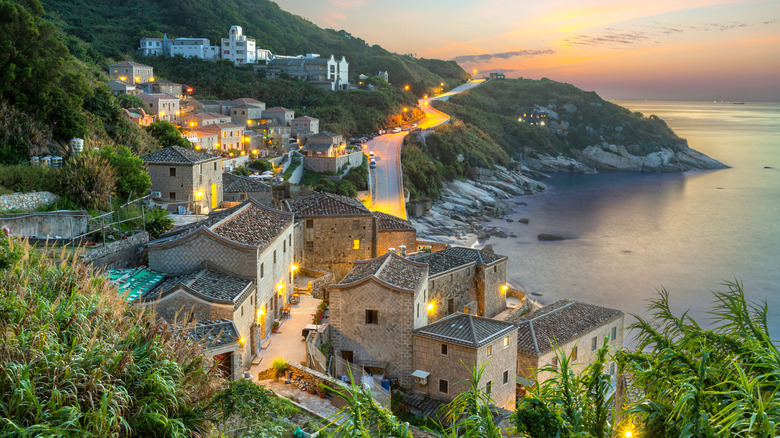The Coast Of Taiwan's Breathtaking Islands Sparkles With Bioluminescent 'Blue Tears' By Night
The waters licking at the shores of Taiwan's dreamy Matsu Islands (formally known as Lienchiang County) display an appealing tinge of bright turquoise. When the sun is shining, there are gatherings of rusty red floating atop the water in certain places, a phenomenon known as the Red Tide. But in the evenings when the conditions are just right, these floating red islands begin to sparkle, becoming a glittering pool of undulating blue and white, like a blue aurora plucked from the sky and dropped into the East China Sea. This phenomenon is known as the Blue Tears, an evocative name given to what is actually a gathering of bioluminescent species of algae known as Noctiluca scintillans.
The Matsu Islands are around 100 miles from Taiwan's main island, and aside from the enchanting Blue Tears, they boast a plethora of sights to explore, making them an ideal addition to a trip to budget-friendly Taipei. Expect attractions like white sand beaches, old military forts, and historic fishing villages settled by fishermen from China's Fujian province, complete with traditional stone houses that have an almost Mediterranean-like charm.
Where to see the magical Blue Tears on the Matsu Islands
The Blue Tears are semi-common across the Matsu Islands, as these tiny algae are agitated by the ocean's currents which move them from beaches and coves back out to sea. And while the bioluminescence is a defense mechanism against predators, anything that disrupts the water will cause the same reaction, which is why they're often seen along the coastline where they interact with rocks and the seabed.
Of the Matsu Islands, Nangan is one of the most frequented by travelers hoping to catch a glimpse of the Blue Tears. There, the Beihai Tunnel, a repurposed military sea tunnel, hosts a Blue Tears boat ride in the evenings between March and September, taking passengers on a journey through the old tunnel in complete darkness. But be warned, the guided commentary is in Chinese, and only a slightly white sparkle is typically seen in the tunnel. One of the best ways to spot the bioluminescence is to join a guided tour to the day's current Blue Tears hot spots. These tours are held on islands such as Nangan, Beigan, and Dongju and incorporate a mix of dark sky stargazing and Blue Tears hunting.
Another boat option is on Beigan island from Qiaozi port, where Blue Tears are sometimes spotted on the sandy beaches. The boats follow gatherings of algae as they move out to sea. The charming Qinbi village is only a few minutes away for anyone hoping to explore historic villages.
How to get to the Matsu Islands from Taipei
There are various ways to reach the Matsu Islands, but as the archipelago is closer to China's Fujian province than Taiwan, the most convenient route is to fly into either Nangan or Beigan from Taipei's Songshan airport. Both of these options take a little under an hour and are only operated by local carriers such as Mandarin Airlines and Uni Airways. Other routes from Taipei include the fast ferry to Nangan, which takes around three hours, or the overnight ferry from New Taipei City's Keelung, which travels to Dongyin and Nangan in around nine hours.
If you're traveling to Taiwan juts to see the bioluminescent plankton, then bear in mind that Matsu isn't the only place you can find bioluminescent wildlife. You may even have more luck spotting those breathtaking displays of bioluminescent waves in Florida at Cocoa Beach and Indian River Lagoon, or on a secret Central American island just off the coast of Honduras.


